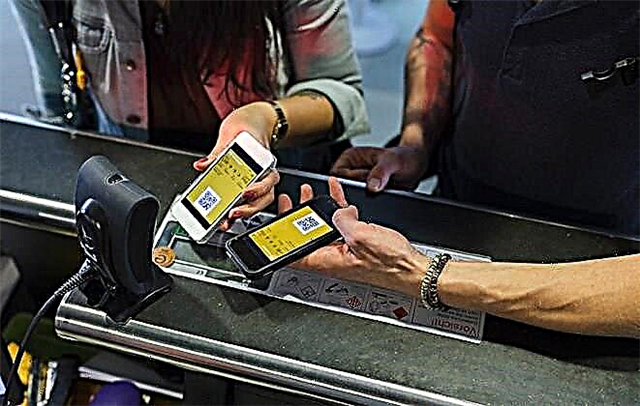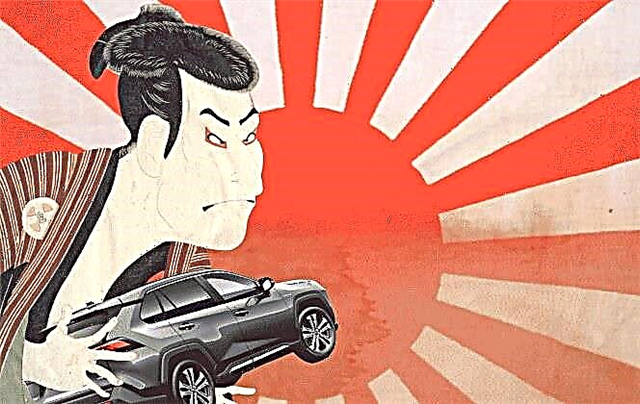The high quality of the products of the Japanese automotive industry is known all over the world. In addition, the Land of the Rising Sun has a fairly high driving culture and strict requirements for maintenance. Therefore, even used cars with solid mileage are often in excellent condition. But in order to avoid possible problems, and at the same time save time and money, it is worth figuring out how to buy a car in Japan and what documents will have to be drawn up after purchasing it.

The main ways to buy cars
Before you start looking for a suitable car, it makes sense to understand the requirements for cars imported into Russia:
- Each car must be equipped with an ERA-GLONASS emergency warning system. Japanese automakers usually install similar equipment of the ECall standard on their cars, so the ERA-GLONASS device can be purchased already before your car arrives in the Russian Federation and you can find a workshop where it will be installed.
- The vehicle must comply at least with the Euro-5 environmental standard (CO emissions no more than 0.8 grams per kilometer). All cars from the Land of the Rising Sun, produced after 2007, meet this requirement, but problems may arise with more well-deserved equipment.
- A car with a "right-hand drive", which all Japanese cars are equipped with, is prohibited by the laws of the Russian Federation for commercial transportation of passengers (that is, such a car cannot be used, for example, in a taxi).

In general terms, the procedure for buying a car in Japan differs little from that adopted in Russia. The usual sequence of actions looks like this:
- Search for a seller.
- Booking and ordering a car.
- Conclusion of a sales contract.
- Payment (mainly by bank transfer).
- Obtaining documents for the car.
- Arrival of the car to Russia, usually by sea through Vladivostok.
- Customs clearance.
- Delivery to the customer.
There are three main ways to buy a car from the Land of the Rising Sun:
- self-purchase without intermediaries;
- purchase through intermediary firms;
- purchase at auction.
The latter option, in turn, can also be carried out independently or through a Russian firm specializing in auctions. Let's consider the features of each of the options.
Self purchase
In theory, finding and buying a car yourself can save money that would otherwise go as a commission to intermediaries. But in practice, the used car market in Japan has many nuances that are well known to firms that have been working on it for years.
Self-purchase is worth it only if you are ready to spend a considerable amount of time looking for a suitable option and studying all the nuances of the transaction.
The main problem is that it is very rare among the Japanese to sell cars from hand to hand through advertisements. Therefore, to find a suitable option, you will have to use a Japanese used car sales site.
The most popular of these resources:
- AutoCom
- BeForward
- CarFromJapan
- JapaneseCarTrade
- JapaneseUsedCar
- JapaneseVehicles
- Mehran
- SBT
- TradeCarView.
 As soon as you find and book a car you like, the dealer's manager will contact you. Most of the sites presented have employees who speak Russian, but just in case, be prepared to negotiate in English.
As soon as you find and book a car you like, the dealer's manager will contact you. Most of the sites presented have employees who speak Russian, but just in case, be prepared to negotiate in English.
As soon as you clarify all the details you are interested in and confirm the order, the dealer will issue an invoice. After the transfer of funds, the seller will immediately send you by express mail all the documents necessary for registration of the vehicle.
The entire package of documents should already be in your hands at the moment when the equipment you have purchased will be unloaded at the port. Next, you will have to clear customs and formalize all the papers necessary for operating a car in the Russian Federation.
Finally, it is worth deciding in advance how you will deliver the purchase from the Far East to your home. Most often, cars are delivered by rail (for example, PacificTrans can help with this), you can also pick it up yourself or order its delivery to professional ferrymen, for example, on the "From place to place" website.
When considering various proposals, it is important to pay close attention to the following characteristics:
- Body condition - "broken" cars are not uncommon even for the most honest sellers. It is considered good form to indicate even the smallest defects in the description of the car, so if, when examining the photos, you see signs of damage that the description does not say a word about, it is better to look for another seller.
- Technical condition of the gearbox. This assembly is subject to serious wear and tear, even with careful driving on quality roads, and it can be very expensive to replace or repair it.
- Mileage value and its relation to price - if a price is indicated for a car with a declared low mileage is significantly lower than the market price, this usually means that the odometer readings have been corrected.
It will be useful to pay attention to the reviews of Russians who worked with this or that seller. You can find them on autoforums, for example Drom.ru.
Purchase through intermediaries
 The services of intermediary firms will help to avoid direct communication with dealer representatives, which will significantly save time. In addition, the standard package of services usually includes paperwork, bringing the car in line with the requirements of Russian legislation, customs clearance and delivery of a used car from the port to your city.
The services of intermediary firms will help to avoid direct communication with dealer representatives, which will significantly save time. In addition, the standard package of services usually includes paperwork, bringing the car in line with the requirements of Russian legislation, customs clearance and delivery of a used car from the port to your city.
The most famous companies in the Russian Federation are:
- Japan star
- JapanLife
- JapanAutoDV
- Tokidoki
- GrantTrade
- SferaCar
- "Auto-Asia"
- PriorityAuto
- Japan Trade.
All of them are engaged in the purchase of used cars at auctions in Japan and their delivery to the client. Most firms offer to choose the delivery option - by rail or by car-transporter.
Working through an intermediary, it is worth considering that many of them offer three different options for delivering a car to the Russian Federation:
- "Full duty" - the equipment arrives fully assembled and operational.
- "Constructor" - before shipment, the car is disassembled into a body, engine and chassis. A separate declaration is drawn up for each module, due to which the amount of duty for the import of equipment is reduced. After arrival, the car is collected in a workshop and registered in the Russian Federation.
- "Cut" - the car is disassembled into small parts, the body is cut into separate elements. All components are issued separately. In the Russian Federation, the car is being assembled again. The duty in this case is minimal, but the final quality and reliability of the machine may be noticeably inferior to the original ones.
The commission for the services of the company is usually calculated as a percentage of the cost of the car and averages about $ 1,000. When placing an order, the company will ask you to make an advance payment, which is about 10% of the cost of the car.
Take a sociological survey!
[yop_poll id = ”14 ″]
Purchase at auction
 The most famous way to buy used Japanese cars is by participating in auctions. They are held every day in all major cities of the country, and it is there that most intermediary firms buy cars.
The most famous way to buy used Japanese cars is by participating in auctions. They are held every day in all major cities of the country, and it is there that most intermediary firms buy cars.
The most popular Japanese auto auctions in the world are:
- ARAI
- Assetline
- Aucnet
- CAA
- JAA
- JU
- HAA
- KCAA
- NAA
- TAA
- USS.
A huge advantage of auctions is the many checks that a car goes through before it is put up for auction. The results of all checks are entered into an information sheet available for viewing by all bidders.
Japanese law does not allow individuals to participate in auctions, so you have to deal with Japanese brokers. In general, the procedure will be similar to buying a car from a Japanese dealer on your own - only you will have to contact the broker much more often in order to clarify the value of your bet.
Even if a visit to auction sites will not help you find a suitable option, you can at least find out the current prices for cars from Japan, which will help you plan your budget when contacting intermediaries.
How to draw up documents for the purchased car
 In order to safely drive a new car in Russia, you will need to clear it through customs, insure and register it. First of all, the car will have to undergo a technical inspection, as a result of which you will receive a diagnostic card (it will cost about 500 rubles). Please note that ERA-GLONASS must already be installed in the vehicle for successful maintenance.
In order to safely drive a new car in Russia, you will need to clear it through customs, insure and register it. First of all, the car will have to undergo a technical inspection, as a result of which you will receive a diagnostic card (it will cost about 500 rubles). Please note that ERA-GLONASS must already be installed in the vehicle for successful maintenance.
After MOT, you need to purchase OSAGO. The most popular companies in which you can issue OSAGO in the Russian Federation:
- RESO Guarantee
- AlfaStrakhovanie
- Ingosstrakh
- VSK
- Rosgosstrakh.
The purchased policy must be valid from the date of receipt of the car. Since the prices for compulsory insurance in the Russian Federation are regulated by the state, the costs can be preliminary estimated using an online calculator.
Now all that remains is to register the car. For this you will need:
- technical certificate;
- your passport as the owner of the vehicle;
- OSAGO policy;
- receipt slip from customs;
- application for registration;
- a receipt for payment of the state duty (in your case, it will be 2,850 rubles, since new numbers will be needed).
Registration is carried out in the traffic police departments. The easiest way is to make an appointment using the State Services website - this will not only save time, but also allow you to get a discount on the state duty.
After receiving the numbers, you will have to go to the insurance company again and enter them into the policy.
How to clear a car through customs in the Russian Federation
 If you are going to customs the car yourself, then the first thing to remember is that individuals have the right to transport no more than 1 car per year. Otherwise, the amount of the duty will be calculated as for legal entities.
If you are going to customs the car yourself, then the first thing to remember is that individuals have the right to transport no more than 1 car per year. Otherwise, the amount of the duty will be calculated as for legal entities.
To go through customs clearance, you will need:
- car sale and purchase agreement and auction order (if any);
- technical passport;
- guarantee certificate;
- certificate of registration, bill of lading (document of acceptance of goods for carriage by sea) and customs invoice (issued by a dealer or an auction);
- certificate of conformity to the Euro-5 standard;
- customs declaration;
- insurance;
- foreign and civil passports;
- receipts for payment of duties.
Online calculators on sites such as Alta, Alterna, TSK or Drom.ru will help to calculate the approximate value of all fees and contributions.
It is best to pay the duty in advance with a small overpayment relative to the calculated amount. In addition to customs duties, you will need to pay a recycling fee, flat tax, customs duty and sometimes excise tax.
Evasion of payment of the duty threatens to result in a fine of 100,000 to 500,000 rubles.
Conclusion
A used car from the Land of the Rising Sun costs significantly less than a new one and is often in excellent technical condition. You can additionally save money if, instead of contacting intermediaries, you try to find the desired option yourself on one of the many available aggregator or auction sites. On the other hand, the services of intermediary firms usually include the preparation of all the necessary documents and allow you to drive a car from Japan directly to your city.











